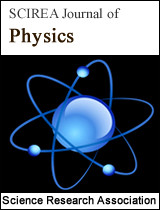46 % (46 %) [48 % (49 %)]-Maximal Efficiencies \mathbf{\eta}_{\mathbf{Imax}.(\mathbf{IImax}.)} investigated in Two New Single \mathbf{n}^+(\mathbf{p}^+)-\mathbf{p}(\mathbf{n})\ \mathbf{X}(\mathbf{x})-Alloy Junction Solar Cells at 300 K,\ [X(x)\equiv\mathbf{Cd}\mathbf{S}_{\mathbf{1}-\mathbf{x}}{\mathbf{Se}}_\mathbf{x}, \mathbf{Cd}\mathbf{S}_{\mathbf{1}-\mathbf{x}}{\mathbf{Te}}_\mathbf{x}], \mathbf{0}\le\mathbf{x}\le\mathbf{1}, According to Highest Hot Reservoir Temperatures, \mathbf{T}_\mathbf{H}, obtained from Carnot-Efficiency Theorem, being proved by Entropy Law
DOI: 10.54647/physics140600 94 Downloads 214775 Views
Author(s)
Abstract
In two new single n^+(p^+)-p(n)\ X(x)-alloy junction solar cells at 300 K,\ [X(x)\equivCdS_{1-x}{\rm Se}_x, CdS_{1-x}{\rm Te}_x],0\lex\le1, by basing on the same physical model-and-treatment method, as used in our recent works [1, 2], we obtain the highest (or maximal) efficiencies, \eta_{Imax.(IImax.)}, given in the following.At x=0, \eta_{Imax.(IImax.)}=42.24 % (42.60 %) are investigated for CdS_{1-x}{\rm Se}_x alloy-junctions, as given in Tables 2.2 (3.2), and \eta_{Imax.(IImax.)}=41.92 % (42.60 %), for CdS_{1-x}{\rm Te}_x alloy-junctions, as given in Tables 4.2 (5.2), which can be compared with the corresponding ones given in the n^+(p^+)-p(n) crystalline CdS-junction solar cells [1], as: \eta_{Imax.(IImax.)}=43.22\ %\ (43.40\ %), respectively.Then, in particular, at x=1, \eta_{Imax.(IImax.)}=46.07 % (46.59 %) and T_H=556.3 K (561.7 K) are obtained for CdS_{1-x}{\rm Se}_x alloy-junctions, and \eta_{Imax.(IImax.)}=48.51 % (48.88 %) and T_H=582.6 K (586.8 K), for CdS_{1-x}{\rm Te}_x alloy-junctions, as given in Tables 4.2 (5.2), respectively, which could be found to be the new and original results. Finally, we can conclude that: (i) \eta_{Imax.(IImax.)} and T_H increase with increasing x, and (ii), for obtaining the highest efficiencies, the (CdS_{1-x}{\rm Se}_x, CdS_{1-x}{\rm Te}_x)-alloy junctions could be chosen rather than the crystalline CdS-junctions [1].
Keywords
single (CdS_{1-x}{\rm Se}_x, CdS_{1-x}{\rm Te}_x)-alloy junction solar cells; single crystalline CdS-junction solar cells; photovoltaic conversion factor; photovoltaic conversion efficiency
Cite this paper
H. Van Cong, K. C. Ho-Huynh Thi, P. Blaise, C. T. Pivet, C. V. Huynh, M. Cayrol, S. Munoz,
46 % (46 %) [48 % (49 %)]-Maximal Efficiencies \mathbf{\eta}_{\mathbf{Imax}.(\mathbf{IImax}.)} investigated in Two New Single \mathbf{n}^+(\mathbf{p}^+)-\mathbf{p}(\mathbf{n})\ \mathbf{X}(\mathbf{x})-Alloy Junction Solar Cells at 300 K,\ [X(x)\equiv\mathbf{Cd}\mathbf{S}_{\mathbf{1}-\mathbf{x}}{\mathbf{Se}}_\mathbf{x}, \mathbf{Cd}\mathbf{S}_{\mathbf{1}-\mathbf{x}}{\mathbf{Te}}_\mathbf{x}], \mathbf{0}\le\mathbf{x}\le\mathbf{1}, According to Highest Hot Reservoir Temperatures, \mathbf{T}_\mathbf{H}, obtained from Carnot-Efficiency Theorem, being proved by Entropy Law
, SCIREA Journal of Physics.
Volume 8, Issue 6, December 2023 | PP. 596-618.
10.54647/physics140600
References
| [ 1 ] | H. Van Cong, “(43.82%, or 44.05%)- Limiting Highest Efficiencies, Obtained Respectively in Crystalline CdS-Junction Solar Cells at 300 K, Due to the Effects of Impurity Size, Temperature, Heavy Doping, and Photovoltaic Conversion, “European Journal of Theoretical and Applied Sciences, vol. 1, pp. 229-245, 2023. |
| [ 2 ] | H. Van Cong, “(14.82%, 12.16%, 26.55%, or 23.69%)- Limiting Highest Efficiencies obtained in Crystalline (X)-Junction Solar Cells, Due to the Effects of Impurity Size, Temperature, Heavy Doping, and Photovoltaic Conversion, “SCIREA J. Phys., vol. 8, pp. 575-595, 2023. |
| [ 3 ] | H. Van Cong, and G. Debiais, “ A simple accurate expression of the reduced Fermi energy for any reduced carrier density. J. Appl. Phys., vol. 73, pp. 1545-15463, 1993; H. Van Cong, and B. Doan Khanh, “Simple accurate general expression of the Fermi-Dirac integral and for j> -1,” Solid-State Electron., vol. 35, pp. 949-951, 1992; H. Van Cong, “New series representation of Fermi-Dirac integral for arbitrary j> -1, and its effect on for integer j,” Solid-State Electron., vol. 34, pp. 489-492, 1991. |
| [ 4 ] | H. Van Cong et al., “Size effect on different impurity levels in semiconductors,” Solid State Communications, vol. 49, pp. 697-699, 1984; H. Van Cong, “Effects of impurity size and heavy doping on energy-band-structure parameters of various impurity-Si systems,” Physica B, vol. 487, pp. 90-101, 2016. |
| [ 5 ] | H. Van Cong, and G. Debiais, “Energy band structure parameters and their data, derived from the measurements of minority carrier current density in heavily doped emitters of silicon devices,” Solar Ener. Mater. and Solar Cells, vol. 45, pp. 385-399, 1997; “Apparent band-gap narrowing and its data derived from the measurements of minority-carrier current density in heavily doped emitters of silicon devices,” Physica Status Solidi A, vol. 155, pp. 547-553, 1996; H. Van Cong, “ A new solution for minority-carrier injection into the heavily doped emitter of silicon devices,” Physica Status Solidi A, vol. 171, pp. 631-64, 1999. |
| [ 6 ] | P. Singh & N. Ravindra, “Temperature dependence of solar cell performance-An analysis,” Solar Energy Materials and Solar Cells, Vol. 101, pp. 36-45, 2012. |

